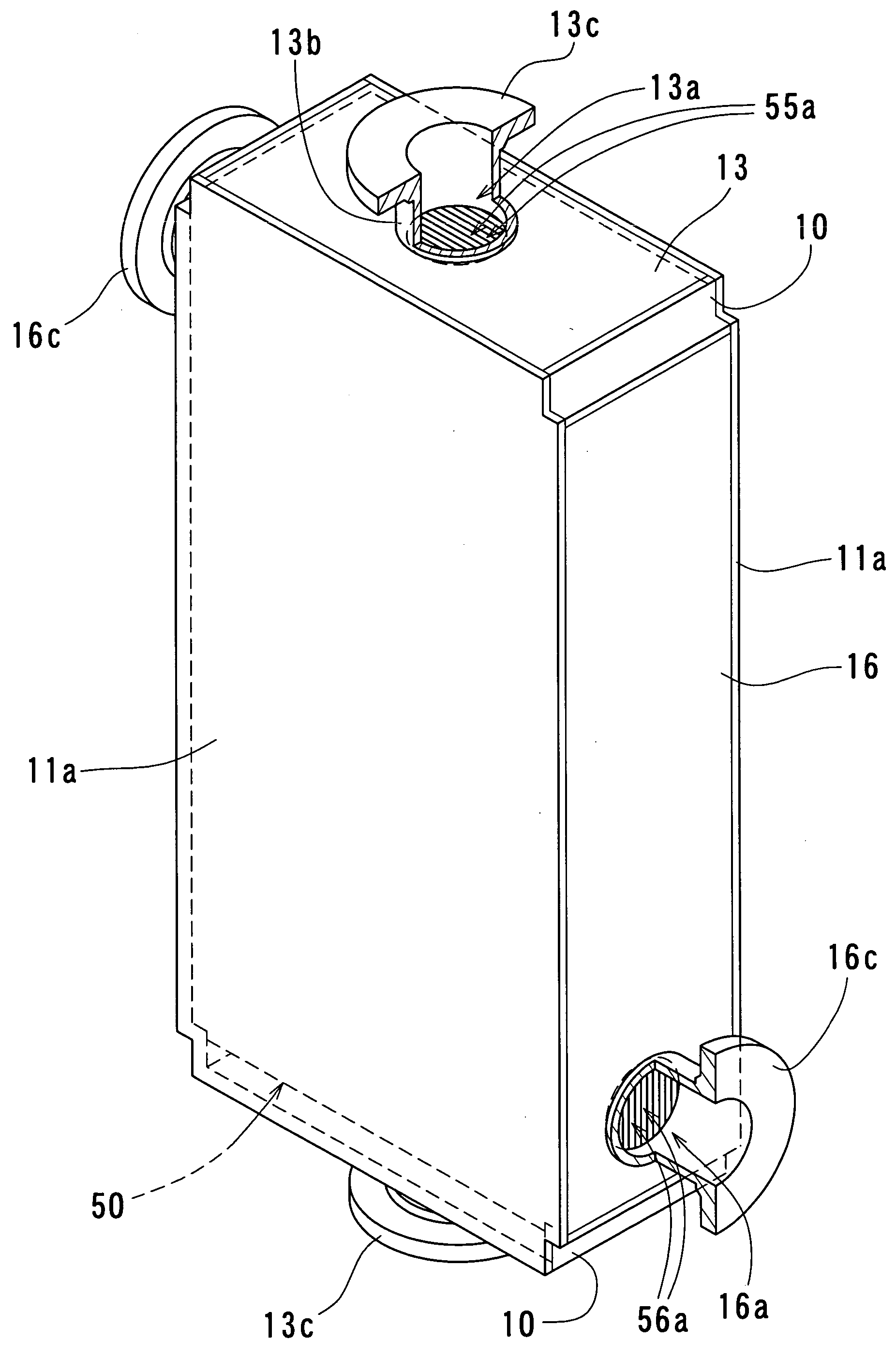Outer shell structure for a heat exchanger
- Summary
- Abstract
- Description
- Claims
- Application Information
AI Technical Summary
Benefits of technology
Problems solved by technology
Method used
Image
Examples
first embodiment
of the Present Invention
[0052] Now, the first embodiment of the present invention will be described in detail below with reference to FIGS. 1 to 10. FIG. 1 is a front view of a heat exchanger according to the first embodiment of the present invention; FIG. 2 is a partially enlarged left-hand side view of the heat exchanger according to the first embodiment of the present invention; FIG. 3 is a partially enlarged bottom view of the heat exchanger according to the first embodiment of the present invention; FIG. 4 is a descriptive view illustrating a state in which a corner ridge member and an inner plate are connected to a heat exchange unit of the heat exchanger according to the first embodiment of the present invention; FIG. 5 is a descriptive view illustrating a state in which the corner ridge member is combined to the heat exchange unit of the heat exchanger according to the first embodiment of the present invention; FIG. 6 is a descriptive view illustrating a state in which an ou...
second embodiment
of the Present Invention
[0089] Now, the second embodiment of the present invention will be described in detail below with reference to FIGS. 12 to 16. FIG. 12 is a front view of the heat exchanger according to the second embodiment of the present invention; FIG. 13 is a partial right-hand side view of the heat exchanger according to the second embodiment of the present invention; FIG. 14 is a partial bottom view of the heat exchanger according to the second embodiment of the present invention; FIG. 15 is a descriptive view illustrating a state in which the corner ridge member and the inner plate are connected to the heat exchange unit of the heat exchanger according to the second embodiment of the present invention; and FIG. 16 is a schematic descriptive view of flow of a liquid in the second gap portion of the heat exchanger according to the second embodiment of the present invention.
[0090] As shown in these figures, the outer shell structure for a heat exchanger 2 according to th...
third embodiment
of the Present Invention
[0110] Now, the third embodiment of the present invention will be described in detail below with reference to FIGS. 17 to 22. FIG. 17 is a front view of the heat exchanger according to the third embodiment of the present invention; FIG. 18 is a partial right-hand side view of the heat exchanger according to the third embodiment of the present invention; FIG. 19 is a partially enlarged bottom view of the heat exchanger according to the third embodiment of the present invention; FIG. 20 is a descriptive view illustrating a state in which the corner ridge member and the inner plate are connected to the heat exchange unit of the heat exchanger according to the third embodiment of the present invention; FIG. 21 is a vertical cross-sectional view of an upper side of the heat exchanger according to the third embodiment of the present invention; and FIG. 22 is a schematic descriptive view of flow of a liquid in the second gap portion of the heat exchanger according t...
PUM
 Login to View More
Login to View More Abstract
Description
Claims
Application Information
 Login to View More
Login to View More - R&D
- Intellectual Property
- Life Sciences
- Materials
- Tech Scout
- Unparalleled Data Quality
- Higher Quality Content
- 60% Fewer Hallucinations
Browse by: Latest US Patents, China's latest patents, Technical Efficacy Thesaurus, Application Domain, Technology Topic, Popular Technical Reports.
© 2025 PatSnap. All rights reserved.Legal|Privacy policy|Modern Slavery Act Transparency Statement|Sitemap|About US| Contact US: help@patsnap.com



